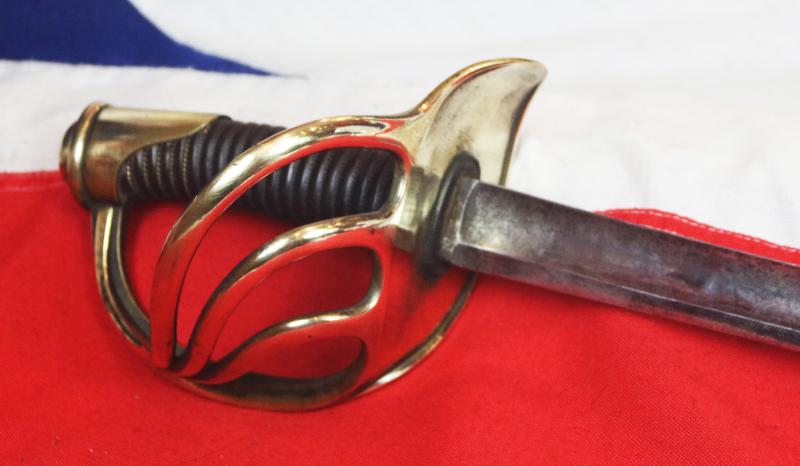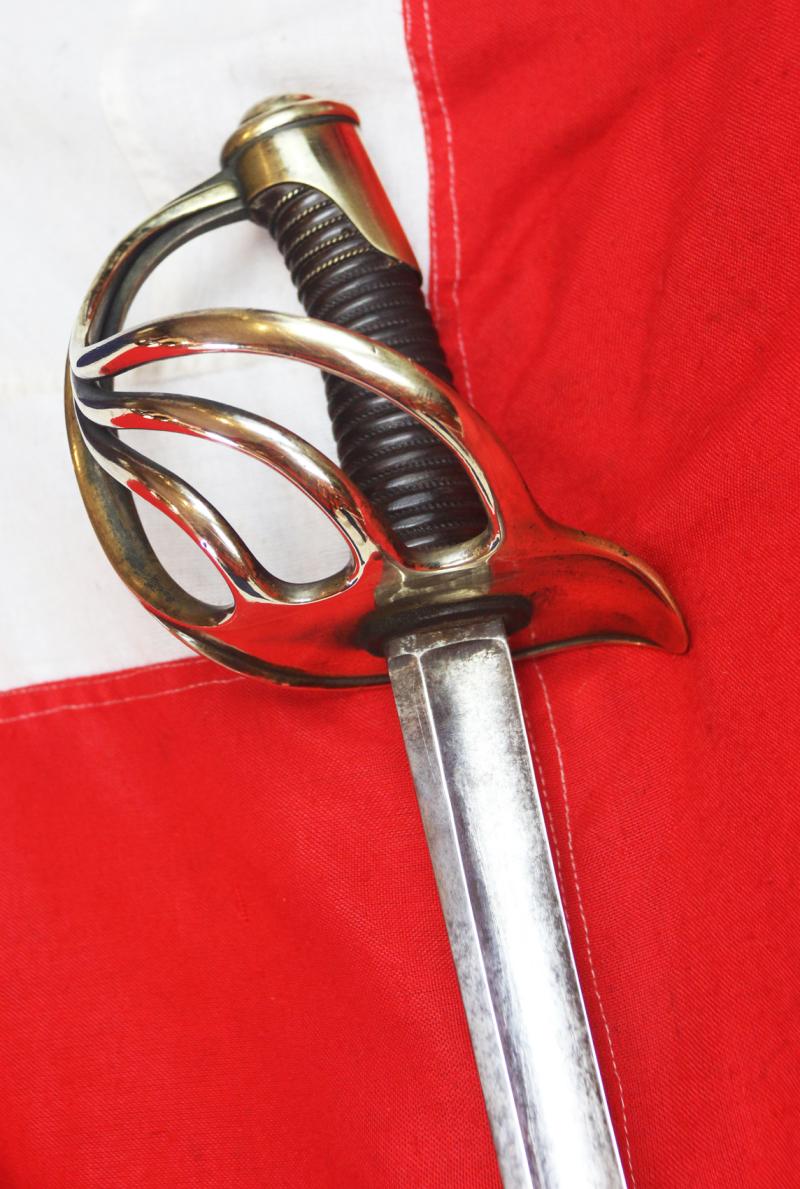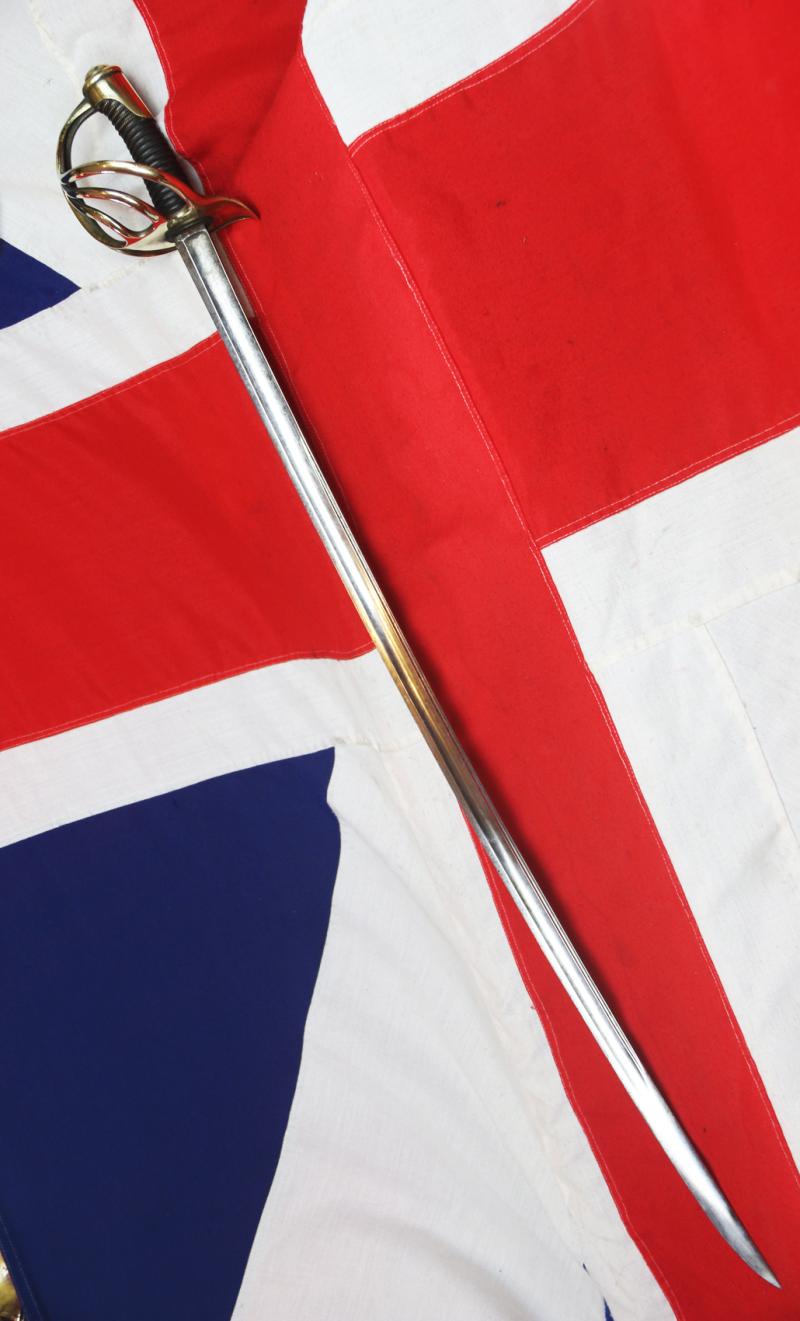French 1822 Model Heavy Cavalry of the Line Sword, French Heavy Cavalry Sword of the Second Empire Period of Napoleon the Third.
A magnificent almost untouched example of this rare French Heavy Cavalry Sword. Very good French M1822 heavy cavalry sword ('bancal'), with four bar brass guard and pommel, good grip with partial original wire. The huge 38 inch blade in very good condition with light patina.
1822 French trooper's sword for Heavy cavalry called "bancal".
Four branch guard bears the Imperial French arms inspector stamp of Faisant Fonction de Directeur, Capitaine Louis Contante Balaran
It's was created between 1816 and 1822 and It's now use again in the Garde républicaine It was called Bancal, because the blade it's not straight and not really curved. With his steel scabbard that is blackened probably for dragoon troops. All in original all steel scabbard with two hanging rings as was correct for that period.
During the July Monarchy, the 2nd Dragoon Regiment dropped the name Doubs, and was among several that were favoured by Louis Philippe I, and called to the maneuvers and festivities at his camp at Compiègne every two years.19 In 1832, it participated in the suppression of the June Rebellion.20 Charles-Marie-Augustin de Goyon, who would be a senior general of the Second Empire, served as its colonel from 1846 to 1850. Under de Goyon, the regiment earned the nickname of "demoiselles de Goyon", owing to his high standards for drill and dress.21 During the 1848 Revolution, the officers of the regiment kept their men calm and disciplined, much to the relief of the citizens of its garrison town of Beauvais.22
Second Republic and Second Empireedit
The 2nd Dragoon Regiment in 1853
Following the establishment of the Second Republic, the regiment was ordered to Paris in May. There it helped protect the new government from working-class revolutionaries during the seizure of the Palais Bourbon in May and the June Days Uprising.22 During the Second French Empire, the 2nd Dragoon Regiment was given orange as a distinguishing colour, until all of the dragoon regiments lost their distinguishing colours in 1862.23 In January 1854, while the Crimean War was ongoing, a detachment of half a squadron of the 2nd Dragoons was sent to the Kingdom of Greece, where it attempted to control the local "bandits" for about a year.24 In 1865, Baron Joachim Ambert was appointed the colonel of the regiment, a role in which he served until 1873.25
During the Franco-Prussian War of 1870, the regiment was part of the 2nd Brigade of General of Division Georges Eugène Blanchard's III Corps.25 After its arrival at the front on 8 August, it protected baggage trains in the retreat to Metz following the Battle of Forbach-Spicheren, before serving in a reconnaissance role, and facing the Prussians at the battles of Borney–Colombey, Mars-la-Tour, and Noiseville. Most of the regiment was briefly taken prisoner by the Prussians on 29 October.2
Code: 25425
895.00 GBP





